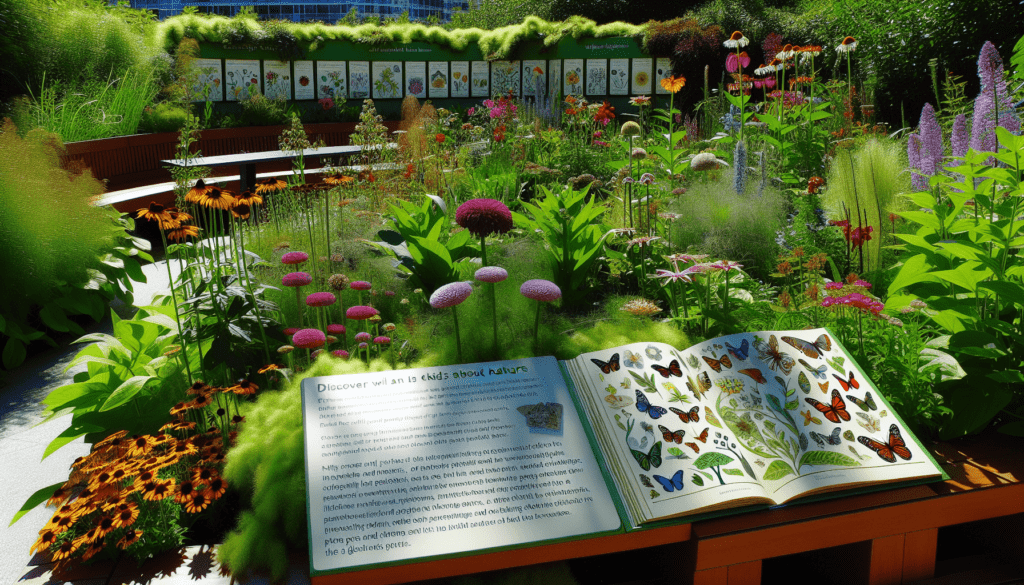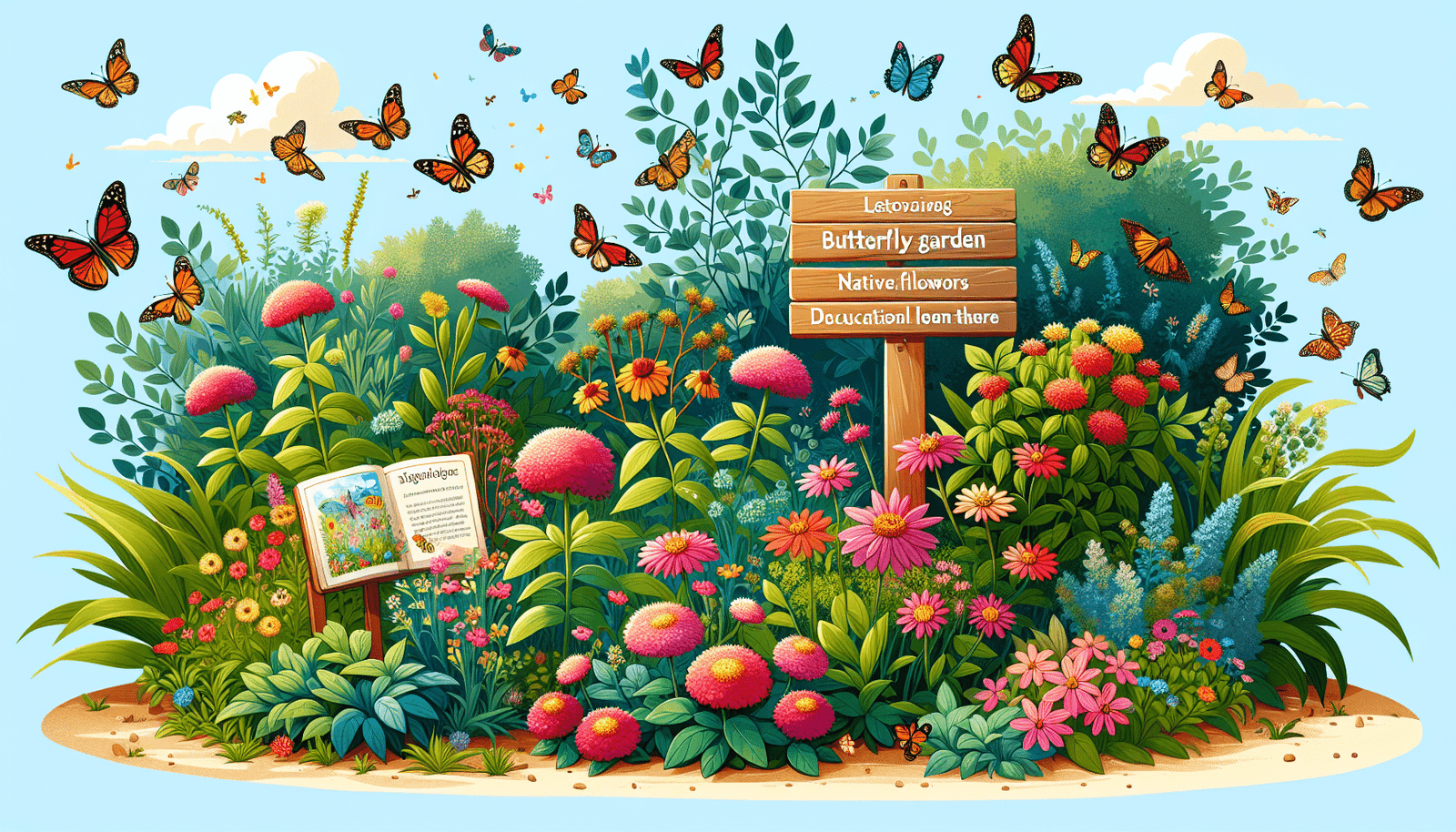How To Design A Garden That Encourages Environmental Education
Have you ever thought about creating a garden that not only looks beautiful but also educates people about the environment? In this article, we will discuss how you can design a garden that encourages environmental education. Whether you are a teacher, parent, or simply a nature enthusiast, there are plenty of ways you can create a space that not only nurtures plants but also nurtures minds.
Importance of Environmental Education in Gardens
It is essential to understand the significance of environmental education in gardens. By incorporating educational elements into your garden design, you can help raise awareness about important environmental issues. Teaching visitors about sustainability, conservation, and the importance of native plants can have a lasting impact on their understanding of the world around them.
When you design a garden with environmental education in mind, you are not only creating a beautiful space but also a learning environment that can inspire curiosity and a sense of stewardship towards the planet.
Selecting Native Plants
One of the first steps in creating a garden that promotes environmental education is to choose native plants. Native plants are well-suited to the local climate and soil conditions, making them easier to grow and maintain. They also provide important habitat and food sources for local wildlife, which can help teach visitors about the interconnectedness of ecosystems.
When selecting native plants for your garden, consider including a variety of species to promote biodiversity. Educate visitors about the benefits of planting native species, such as requiring less water and attracting pollinators like bees and butterflies. A diverse range of plants will not only create a visually appealing garden but also serve as a living classroom for environmental education.

Incorporating Sustainable Practices
Incorporating sustainable practices into your garden design is another essential aspect of encouraging environmental education. From composting food waste to using rain barrels for irrigation, there are many ways you can demonstrate sustainable gardening techniques to visitors.
Consider adding signage or interactive displays that explain the sustainable features of your garden, such as solar-powered lights or a water-efficient drip irrigation system. By showcasing these practices, you can inspire others to adopt eco-friendly habits in their own gardens and daily lives.
Creating Educational Signage
Educational signage plays a crucial role in teaching visitors about the plants, wildlife, and environmental concepts in your garden. By providing informative signage throughout the space, you can enhance the educational experience and encourage exploration and discovery.
Design signage that includes interesting facts about the plants in your garden, the importance of pollinators, or how composting contributes to soil health. Use colorful visuals and easy-to-understand language to make the information accessible to visitors of all ages. Interactive elements like QR codes that link to additional resources can also engage tech-savvy visitors and provide more in-depth information.

Building Nature-Based Play Areas
Integrating nature-based play areas into your garden design can create opportunities for hands-on learning and environmental exploration. From sensory gardens with fragrant herbs to wildlife habitats like birdhouses and butterfly gardens, there are many ways to engage visitors of all ages in nature-inspired activities.
Design play areas that encourage creativity and imagination, such as plant-themed scavenger hunts or sensory trails with different textures and scents. By incorporating elements like stepping stones, tunnels, and balance beams, you can create a stimulating environment that promotes physical activity and a deeper connection with nature.
Providing Learning Opportunities
Offering structured learning opportunities in your garden, such as workshops, guided tours, or school field trips, can further enhance the educational experience for visitors. By inviting experts to lead educational programs on topics like plant identification, sustainable gardening, or wildlife conservation, you can provide valuable insights and hands-on learning experiences.
Collaborate with local schools, environmental organizations, or community groups to develop educational programs that align with your garden’s mission and goals. Consider hosting themed events or seasonal workshops that cater to different age groups and interests, such as bird-watching tours, composting workshops, or botanical illustration classes.
Engaging the Community
Engaging the community in your garden project can help build support and awareness for environmental education initiatives. Encourage neighbors, local businesses, and volunteers to get involved in the planning, design, and maintenance of the garden to create a sense of ownership and pride in the space.
Organize community clean-up days, plant sales, or fundraising events to raise awareness and support for your garden project. By involving the community in hands-on activities and educational programs, you can foster a sense of community spirit and environmental stewardship that extends beyond the garden’s borders.
Evaluating and Improving
Regularly evaluating and improving your garden’s educational programs and design features is essential to ensuring its long-term success. Gather feedback from visitors, volunteers, and stakeholders to assess the effectiveness of your educational initiatives and identify areas for improvement.
Monitor the health and growth of your plants, the diversity of wildlife in the garden, and the engagement level of visitors to determine the impact of your environmental education efforts. Use this feedback to make informed decisions about future enhancements to the garden, such as adding new signage, expanding play areas, or hosting more educational events.
By following these tips and strategies, you can design a garden that not only promotes environmental education but also inspires a deeper appreciation for nature and conservation. Whether you are creating a small community garden or a larger botanical space, there are endless opportunities to integrate educational elements that engage and enlighten visitors of all ages. Start planning your garden project today and watch as it blossoms into a vibrant hub of environmental learning and inspiration.

